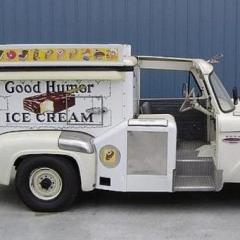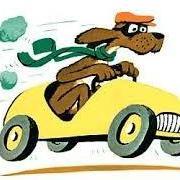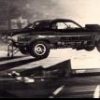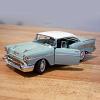
JLewis
Members-
Posts
52 -
Joined
-
Last visited
Previous Fields
-
Scale I Build
1/24
Profile Information
-
Full Name
Jim Lewis
Recent Profile Visitors
2,787 profile views
JLewis's Achievements

MCM Regular (3/6)
-
This thread didn't seem to catch many people. I want to thank those who did offer comments. Here is the finished product. I was happy to make everything fit under the body work.
-
So back to the important stuff. I wanted to make the rear engine cover easily removable so I decided to use some design license to make the wing attach to the engine cover so it could be removed as a unit. To do this I made two little bosses attached to the engine cover. Then I modified the stanchions and added brackets for the arms so the arms will attach to the cover instead of the roll bar Next I assembled the arms and brackets for the new wing attachment '
-
Been gone a while doing some jewelry for Christmas. I bought a bunch of watch guts and made a bunch of steampunk style jewelry. I cast watch parts in resin and make pendants, earrings, hairclips, bracelets, etc. My wife offers these up on facebook for free or for any donation the reader wants with the money going for Christmas decorations for the homeless abused women she works with. She got in a ton of money and was able to give out a lot of trees and decorations for Christmas. Food and clothes for the shelter women are available, but decorations and gifts are hard to come by. She fills this need with the jewelry we make. I buy watch guts by weight from China: I use clear resin to mount the parts in jewelry blanks I also get from China. We also make pendants and earrings from cast gears: I also get some larger watch carcasses and mount them as necklaces:
-
A little more progress. Was able to mount the roll bar and oil radiators and the plumbing to tie them together. Except for the transmission cooler, I think all the hoses have been made.
-
The smallest wire is in the front the white wire and the black and red wire are about .2 mm and are about as small an insulated wire as I can find. The white wire is from Micron Meter and runs $15.00 for fifty feet. They have it in a bunch of colors but you have to buy a minimum of fifty feet. The shipping was also high, thirteen dollars. I thought I would buy a roll of white and use colored sharpies to color them but whatever the coating is, sharpie ink won't touch it. While the per foot price is good, you would have to invest a hundred dollars for a half dozen different colors. the red and black wires are the best bargain. They come from Hobby King and cost $.44 for one meter. Fabulous price. Only in black and red. They call it Turnigy High Quality 36awg wire. Best deal by far. I bought six meters of each color for $6.00. Believe me, this stuff is tiny. Great for gauges etc. in scale, this wire is around 3/16 of an inch and is the smallest I have found. If anyone knows any smaller scale wire please chime in. I did see some wire used by model railroad people but it was pricey.
-
In the back of the picture are rolls of beading wire. There are ten colors and ten meters of each color. The larger tools are .4 mm and the smaller rolls are .3 mm. That means the smaller rolls are a scale 3/8 inch while the larger rolls scale out to less than one half of an inch. these are a super buy at less than ten dollars each set. The drawback is that this is a shiny wire. I tried to touch them up with some sandpaper but I couldn't remove the shine without going through the color. A coat of flat clear worked well but it is one more step. The smaller wire is a good size for every day wiring.
-
Wire. What are some affordable alternatives? Wire to scale can be expensive. Aftermarket wire can run three dollars a foot. Here are some alternatives. starting at the left is a bundle of .5 mm wire. This is the size that most aftermarket companies use. I found this bundle of ten feet of ten different colors for less than $6.00. That is 100 feet of wire at six cents a foot. Outstanding deal.
-
Once dry trim off the excess and clean up the edges. Now use the holes in the top to drill your wire holes. I usually go down about 3/16 of an inch. When drilling these holes I angle the drill slightly toward the center of the sprue so I don't tear out the side of my distributor. now you can cut off your distributor and mount it on a smaller shaft. By the way, when I drill the hole in the center of the distributor for the coil wire I drill far enough so when I cut off the finished distributor head the center hole is there so I can mount the head.
-
Now take a thin piece of sheet stock, I use .010 inch, and tape your template to it. Drill out your holes in the thin stock and remove the template. now find your 5 mm thick sprue and square the end. Drill a hole in the center of the end of the sprue. If anyone needs it I can show you how to make a jig to find the center of a piece of round stock. Now insert a short piece of wire through the center hole of your stock with the holes in it and into the end of the sprue. Glue the pieces together.
-
Now cut out your templates and keep them for future use
-
Do this on both sides. Now make lines that go from your hole on the straight line through the point where the two arcs meet and guess what, you have now made perfect 60 degree lines for a six cylinder distributor. Now use your two millimeter compass and scribe a circle around the center and drill your holes.
-
How about a six cylinder? Start with a new piece of stock, scribe a straight line and drill a hole on the line somewhere near the middle. Except for the two millimeter distance on your scribe compass, there are no other exact measurements needed. Take your two millimeter compass and move one point out to around an inch or so. Use this to scribe a half circle around your center hole. now use that same compass to scribe a line from where the circle crosses the straight line to where the compass hits the half circle
-
Take a piece of sprue and drill two holes two millimeters apart and press a couple of pins into the holes to make a scribe compass. Use this to scribe a circle around your center hole. Now drill 8 holes at the intersection on of your scribed circle. Now you have a template to use for 4 and 8 cylinder distributors.
-
Now draw two more lines parallel to the first one so you have a grid. Connect the diagonal corners . using a drill bit the size of your chosen wire, drill a hole in the center



